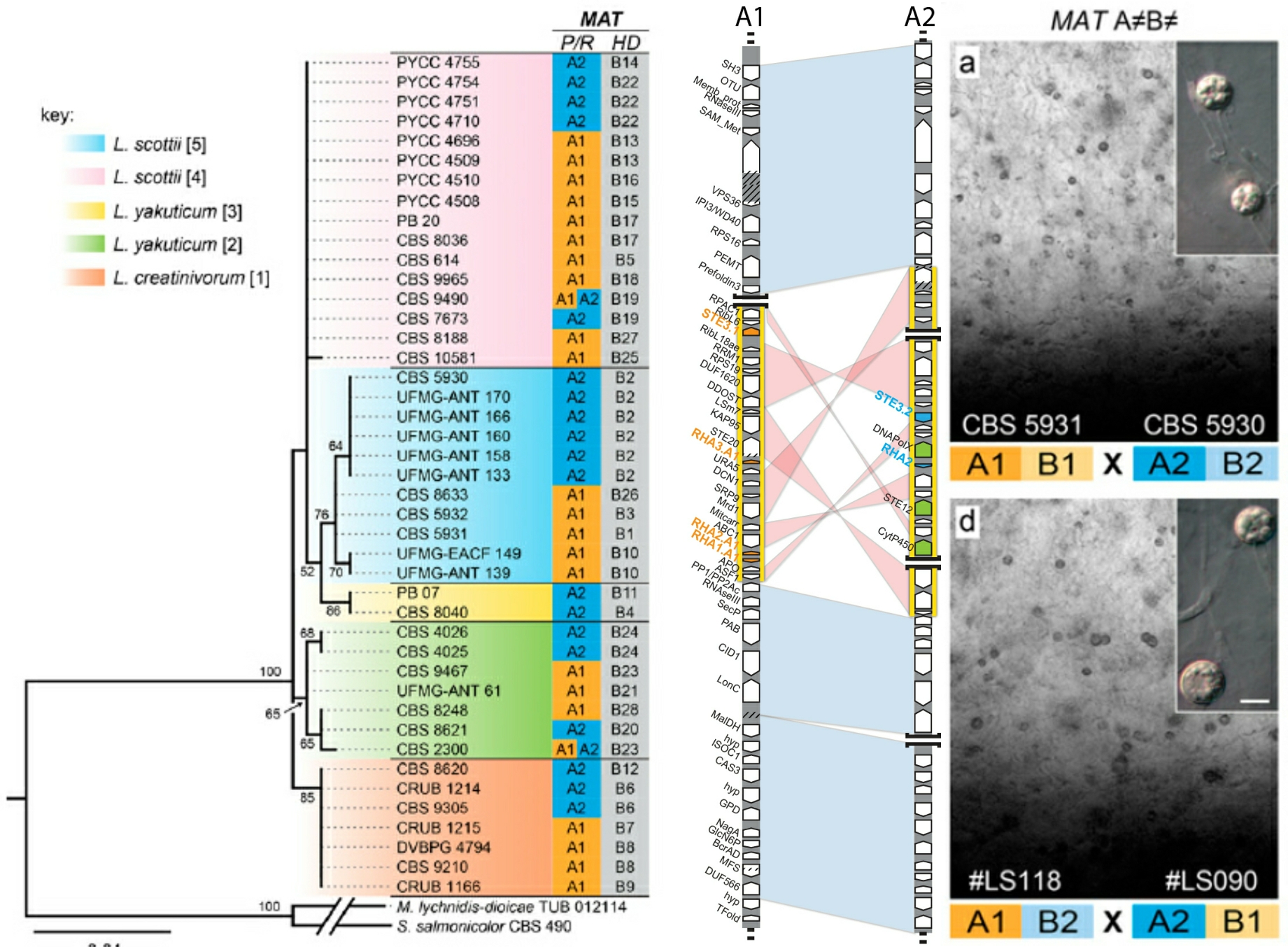The Yeast Genomics* lab @ NOVA
(*evolutionary, functional, comparative and more)



Sexual reproduction has a fundamental role in the biology of many organisms and likely represents a defining point in the evolution the eukaryotes.
In fungi, the first description of sexual development goes back nearly two centuries. Ever since, a myriad of fungal species have had their sexual stages established, but the sexual system itself remains unknown or uncertain for many of these cases.
Within the Basidiomycota, emphasis has been given to sexual reproduction of dimorphic plant or animal fungal pathogens classified in two major lineages within the Basidiomycota (Ustilaginomycotina and Agaricomycotina) where sexual development and pathogenicity are usually interconnected. In contrast, considerably less is known for fungal species belonging to the third and earliest-
Using whole-
Transitions in modes of sexual reproduction in fungi seem to have continuously occurred over time, with most studies highlighting transitions from outcrossing tetrapolar multiallelic systems, to bipolar biallelic systems that promote selfing, and then to homothallic (self-
Although many basidiomycetes are homothallic, the genetic makeup underlying this mating behavior was been much less investigated. We are therefore exploring the molecular underpinings of the homothallic sexual behavior using the yeast Phaffia rhodozyma (Xanthophyllomyces dendrorhous) as a model.
Overall, we reason that such endeavors will provide a much better understanding on how the different modes of reproduction (selfing vs. outcrossing), mating systems (bipolar vs. tetrapolar) and lifestyles (pathogenic vs. saprobic) interplay in fungal evolution. Some of our ongoing studies are highlighted below:

Evolution of Sexual Reproduction in Basidiomycetes
Paula Gonçalves

Our initial studies in the red yeast Sporidiobolus salmonicolor uncovered a mating system that appeared to deviate from the classical bipolar and tetrapolar mating paradigms. This was based on the observation that only two alleles existed at the MAT pheromone/ receptor locus (P/R), but each allele was always associated to multiple, yet specific, alleles at the MAT homeodomain locus (HD). In other words, we did not detect random assortment of P/R and HD alleles in natural populations. However, the progeny of a laboratory cross between compatible strains indicated that recombination/assortment of P/R and HD loci could occur, albeit at a low frequency. We also confirmed that heterozygosity at both MAT regions is required for mating. To denote the distinction between the strictly bipolar mating behavior of S. salmonicolor natural isolates and the apparent tetrapolar pattern of inheritance of MAT genes in laboratory crosses we named this system pseudo-
First insight into the evolution of mating systems in the Pucciniomycotina



(A) Life cycle of the smut fungus Ustilago maydis (adapter from Morrow and Fraser 2009). The yeast form of U. maydis is non-

A phylogeographic study of Phaffia rhodozyma (Xanthophyllomyces dendrorhous), an orange-
The prospective use of P. rhodozyma for astaxanthin production spurred the development of genetic tools, like targeted gene deletion, so that it is currently accessible to genetic modification. However, the mechanisms of sexual reproduction remain unknown. We are currently taking advantage of the biological diversity now uncovered to elucidate important features of Phaffia biology, with an emphasis on the molecular and functional characterization of the genes involved in sexual reproduction and how they interplay to originate the homothallic sexual behavior.
Molecular characterization of the homothallic sexual behavior of Phaffia rhodozyma

Geographic Distribution, phylogeny, host tree association of Phaffia.
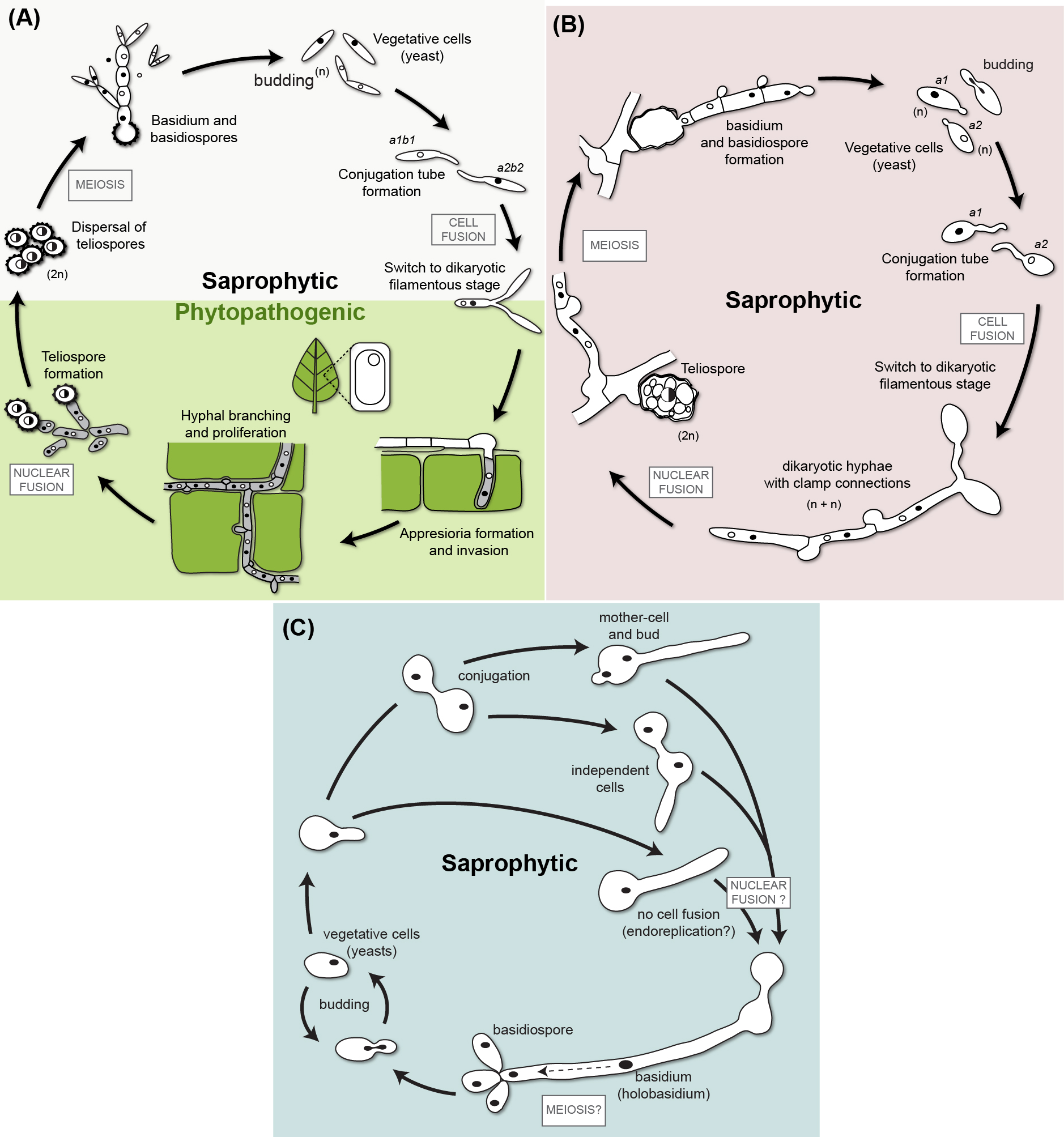
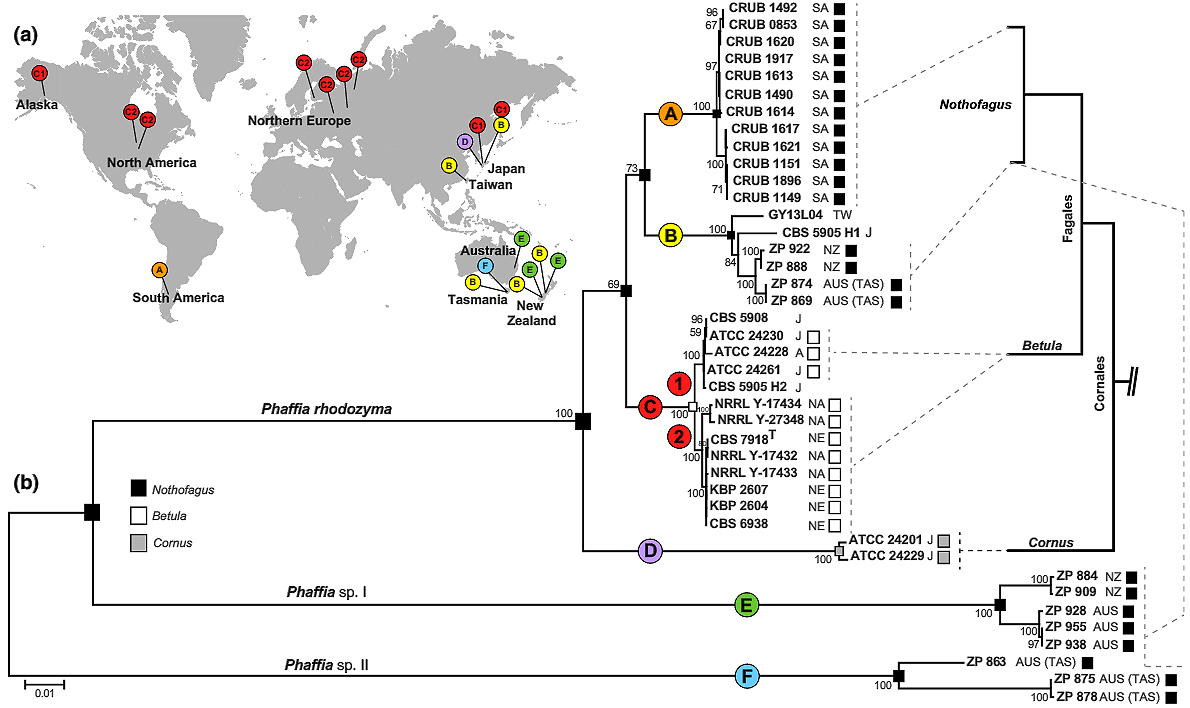
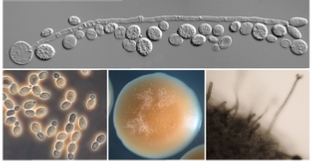
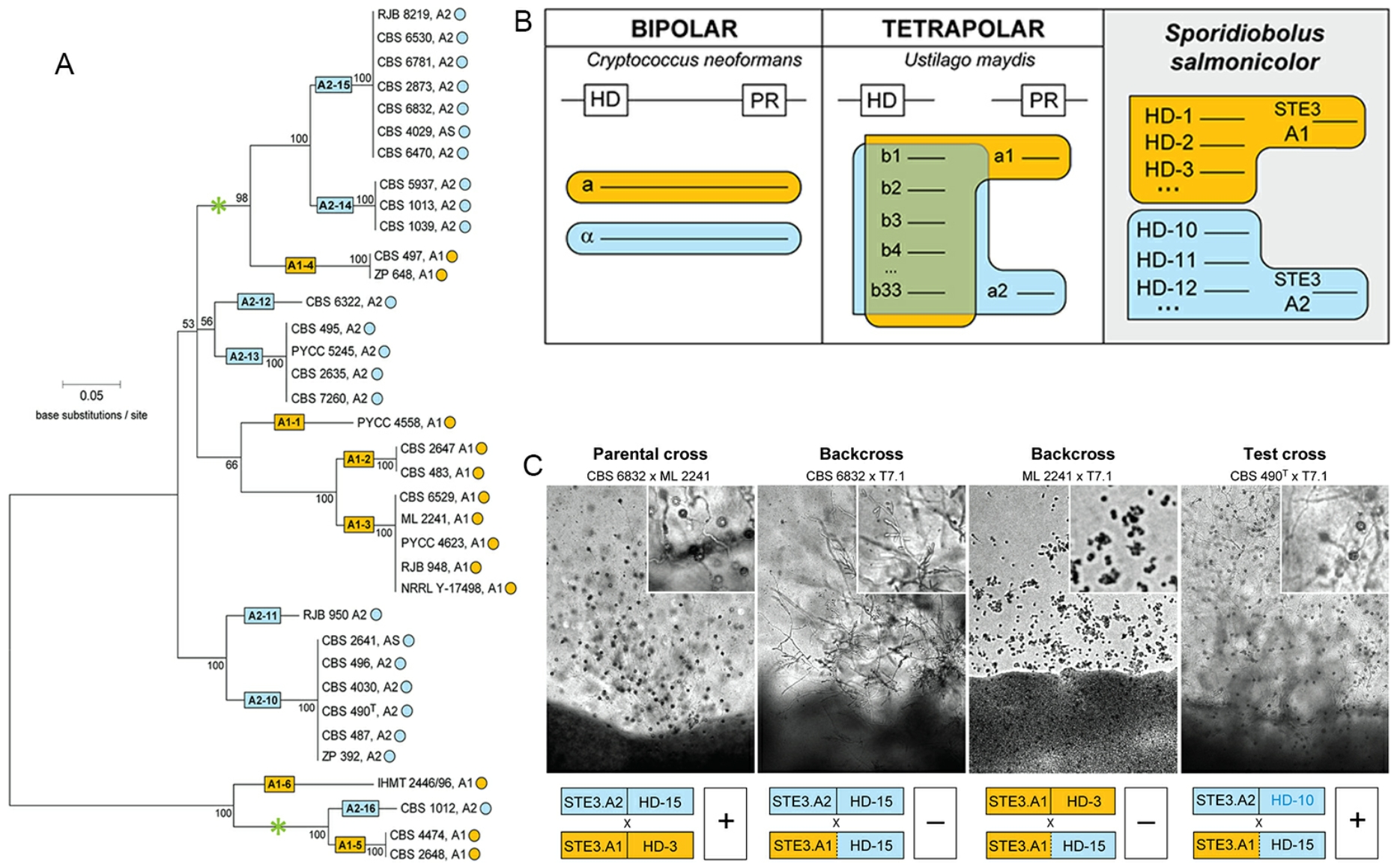
(A) Diversity and phylogeny of HD alleles in natural isolates of S. Salmonicolor. (B) Comparison of the number and distribution of MAT alleles in emblematic species representing the different mating systems (HD, homeodomain locus; PR, pheromone/receptor locus). (C) Sexual proficiency of the T7.1 meiotic progeny resulting from assortment/recombination between PR and HD parental alleles. Heterozygosity at both MAT regions is required for sexual reproduction.


(Top panel) Phaffia rhodozyma sexual stage (a slender holobasidium with two basidiospores arising from a single cell can be observed). (Bottom panel) Yeast cells (left); colony surface showing developing holobasidia (middle); holobasidium with two basidiospores (right).

The tetrapolar mating system of the yeast Leucosporidium scottii

((Left) Phylogeny of L. scottii species complex and MAT allele diversity. (Middle) Gene content and organization of the P/R MAT locus in L. scottii strains CBS 5931 (A1) and CBS 5930 (A2). (Rigth) Micrographs of crosses between the parental strains and selected progeny exhibiting nonparental combination of MAT alleles.
The tetrapolar system, in which mating is dictated by two alternate sets of MAT genes at genetically unlinked regions, has been proposed to be the ancestral state in basidiomycete fungi. Support for this model has however been gathered only from representatives of two more recently derived lineages. In this paper, published in Genetics we used whole-

